MENU
The Electronic Scholarly Publishing Project: Providing access to classic scientific papers and other scholarly materials, since 1993. More About: ESP | OUR CONTENT | THIS WEBSITE | WHAT'S NEW | WHAT'S HOT
Comparative Timelines
The ESP Timeline (one of the site's most popular features) has been completely updated to allow the user to select (using the timeline controls above each column) different topics for the left and right sides of the display.
Select:
New Left Column
New Left Column
Dates
Decade
New Right Column
New Right Column
Acorn Atom Launched
Apple Computer’s Initial Share Offering
Microsoft Signs Contract with IBM to Create Operating System
Sinclair ZX80 Launched
The Apple III was announced
Christiane Nüsslein-Volhard and Eric Wieschaus describe genetic mutations affecting the body plan of the fruit fly Drosophila, and identify genes controlling the basic body plans of all animals. These genes will eventually be known as Hox genes.
Paul Berg, Walter Gilbert, and Frederick Sanger share a Nobel Prize in Chemistry, with Berg cited for his fundamental studies of the biochemistry of nucleic acids, with particular regard to recombinant-DNA, and Gilbert and Sanger cited for their contributions concerning the determination of base sequences in nucleic acids. This is Sanger's second Nobel, the first having come in 1958 for his work on the structure of insulin.
 Louis W. Alvarez, Walter Alvarez, Frank Asaro and Helen V. Michel publish their asteroid impact theory of dinosaur extinction. The theory will not gain widespread acceptance among scientists for several years.
Louis W. Alvarez, Walter Alvarez, Frank Asaro and Helen V. Michel publish their asteroid impact theory of dinosaur extinction. The theory will not gain widespread acceptance among scientists for several years.
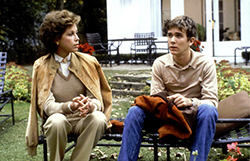 Ordinary People wins Academy Award for best picture. Robert Redford's directing debut won at the National Board of Review, the N.Y. Film Critics Circle, Golden Globes, the Writers and Directors guilds, and then four Oscars, out of six nominations.
Ordinary People wins Academy Award for best picture. Robert Redford's directing debut won at the National Board of Review, the N.Y. Film Critics Circle, Golden Globes, the Writers and Directors guilds, and then four Oscars, out of six nominations.
1980
(no entry for this year)
Acorn BBC Micro Launched
HP-41 calculator Used In Space Shuttle
IBM announced that it was launching a personal computer using an Intel 8088
IBM introduces personal computer with Microsoft's 16-bit operating system, MS-DOS 1.0
Introduction of Osborne portable computer in a suitcase
Microsoft incorporates
Sinclair ZX81 Computer Launched
Space Shuttle uses Intel 8086 and RCA 1802
The first ‘portable’ computer is launched
VIC-20 Released in Europe & US
Ronald Reagan becomes fortieth president of the United States.
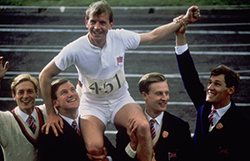 Chariots of Fire wins Academy Award for best picture. The tale of the 1924 Olympics proved one of the biggest surprises in Oscar history, though a popular choice; most pundits had predicted it would be a showdown between Warren Beatty's epic Reds and the small-scale family drama On Golden Pond.
Chariots of Fire wins Academy Award for best picture. The tale of the 1924 Olympics proved one of the biggest surprises in Oscar history, though a popular choice; most pundits had predicted it would be a showdown between Warren Beatty's epic Reds and the small-scale family drama On Golden Pond.
1981
(no entry for this year)
Commodore 64 Released
Dragon 32 Released
Introduction of Cray X-MP supercomputer
Introduction of Intel 80286 at 6 MHz, with 134,000 transistors
Sinclair launches the ZX Spectrum computer
Sinclair ZX Spectrum Launched
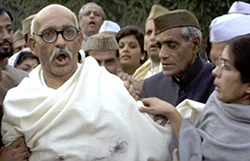 Gandhi wins Academy Award for best picture. There was a lot of competition that year, including E.T. the ExtraTerrestrial and Tootsie. But the grand-scale biopic from director Richard Attenborough was the evening's big winner, with eight trophies.
Gandhi wins Academy Award for best picture. There was a lot of competition that year, including E.T. the ExtraTerrestrial and Tootsie. But the grand-scale biopic from director Richard Attenborough was the evening's big winner, with eight trophies.
1982
(no entry for this year)
On November 2, Pres. Ronald Reagan signs into law a bill making the third Monday in January a federal holiday honoring the life of Martin Luther King Jr.
Apple Lisa Launched
Introduction of spreadsheet program 1-2-3 by Lotus,
Microsoft Introduced 2-button Mouse
Microsoft Introduces Windows
The famicom is released in Japan
German paleobiologist Adolf Seilacher suggests that most of the Ediacaran fossils discovered in the 1940s are not related to any modern forms. Calling them vendobionts, he argues that they went extinct after the emergence of large predators. Seilacher's interpretation, however, will remain in dispute.
 Terms of Endearment wins Academy Award for best picture. TV's James L. Brooks made a splashy film debut, winning three personal awards that night (as writer, director, and producer), while Shirley MacLaine and Jack Nicholson also took home acting prizes.
Terms of Endearment wins Academy Award for best picture. TV's James L. Brooks made a splashy film debut, winning three personal awards that night (as writer, director, and producer), while Shirley MacLaine and Jack Nicholson also took home acting prizes.
1983
(no entry for this year)
Apple launches Macintosh 128K
Creation of Dell Computer Corporation by Michael Dell
First ARM Processors Powered Up
IBM and Compaq introduce the IDE interface
IBM’s new 3480 cartridge tape system introduced
Introduction of IBM PC/AT based on Intel 80286
Macintosh 512K Launched
Novelist William Gibson coins the term cyberspace
David Raup and Jack Sepkoski publish the controversial claim that mass extinctions are regularly spaced at 26 million years.
Richard Leakey and his team discover Turkana Boy, the most complete Homo erectus fossil yet discovered.
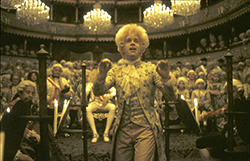 Amadeus wins Academy Award for best picture. Milos Forman's sumptuous version of Peter Shaffer's stage play scored eight wins out of 11 nominations.
Amadeus wins Academy Award for best picture. Milos Forman's sumptuous version of Peter Shaffer's stage play scored eight wins out of 11 nominations.
1984
(no entry for this year)
United States Rep. William H. Gray III (Pennsylvania), becomes the first African-American congressmen to chair the House Budget Committee.
Commodore 128 Released
Cray X-MP Supercomputer Begins Operation
First Commodore Amiga Released
Introduction of Intel 386
Microsoft Windows Launched
Olivetti buy 49% of Acorn Computers
Steve Jobs founds NeXT Computers Inc.
Kenneth Oakley publishes Decorative and Symbolic Uses of Fossils describing, among other things, a hand axe crafted by Homo heidelbergensis featuring a fossil sea urchin, and a fossil urchin set within a bronze locket from a Gallo-Roman temple.
Paleoanthropologists excavate an artifact-rich portion of Cueva de los Aviones in Iberia. Fifty-thousand-year-old perforated and pigment-stained shells from the cave will prompt researchers to argue, 25 years later, that Neanderthals wore both makeup and jewelry.
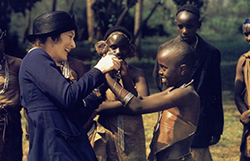 Out of Africa wins Academy Award for best picture. The epic romance benefited from Meryl Streep's performance, Sydney Pollack's direction and Kurt Luedtke's adaptation of Isak Dinesen's book. In all, the film won seven Oscars (though Streep was an also-ran).
Out of Africa wins Academy Award for best picture. The epic romance benefited from Meryl Streep's performance, Sydney Pollack's direction and Kurt Luedtke's adaptation of Isak Dinesen's book. In all, the film won seven Oscars (though Streep was an also-ran).
1985
(no entry for this year)
On September 8, The Oprah Winfrey Show from Chicago becomes nationally syndicated.
Acorn BBC Master Compact Launched
Acorn BBC Master Launched
Apple Macintosh Plus launched
First PC virus is released with "Brain"
Microsoft moves to corporate campus in Redmond, Washington
Microsoft stock goes public
Nintendo NES released
Kodak scientists invent the world's first megapixel sensor.
 On April 26, the Chernobyl Nuclear Disaster occurred in the Soviet Union, when reactor 4 of the Chernobyl Nuclear Power Plant suffered a catastrophic power increase, leading to explosions in the core. This dispersed large quantities of radioactive fuel and core materials into the atmosphere and ignited the combustible graphite moderator. The burning graphite moderator increased the emission of radioactive particles, carried by the smoke, as the reactor had not been contained by any kind of hard containment vessel (unlike all Western plants). The accident occurred during an experiment scheduled to test a potential safety emergency core cooling feature. Large areas in Ukraine, Belarus, and Russia had to be evacuated, with over 336,000 people resettled.
On April 26, the Chernobyl Nuclear Disaster occurred in the Soviet Union, when reactor 4 of the Chernobyl Nuclear Power Plant suffered a catastrophic power increase, leading to explosions in the core. This dispersed large quantities of radioactive fuel and core materials into the atmosphere and ignited the combustible graphite moderator. The burning graphite moderator increased the emission of radioactive particles, carried by the smoke, as the reactor had not been contained by any kind of hard containment vessel (unlike all Western plants). The accident occurred during an experiment scheduled to test a potential safety emergency core cooling feature. Large areas in Ukraine, Belarus, and Russia had to be evacuated, with over 336,000 people resettled.
Norman H. Sleep submits a paper calculating the probability of life forms surviving an extraterrestrial impact in the Hadean Period (first 700 million years of Earth's existence). The paper is rejected on the grounds there would have been no life on Earth yet.
 Platoon wins Academy Award for best picture. Oliver Stone's autobiographical film, a vivid account of his Vietnam experiences, won four Oscars, including Stone as director.
Platoon wins Academy Award for best picture. Oliver Stone's autobiographical film, a vivid account of his Vietnam experiences, won four Oscars, including Stone as director.
1986
(no entry for this year)
 Dr. Clifton R. Wharton Jr. is appointed chairman and CEO of TIAA-CREF, the 19th largest US Fortune 500 company. He becomes the first black chairman and CEO of a major US corporation.
Dr. Clifton R. Wharton Jr. is appointed chairman and CEO of TIAA-CREF, the 19th largest US Fortune 500 company. He becomes the first black chairman and CEO of a major US corporation.
 Kurt Schmoke becomes the first African-American elected mayor of Baltimore.
Kurt Schmoke becomes the first African-American elected mayor of Baltimore.
Commodore release the Amiga 500 and the Amiga 2000
Macintosh II released
Windows 2 was launched
Allan Wilson and Rebecca Cann announce that all humans share a common ancestor who lived in Africa as recently as 150,000 years ago. Because the discovery is based on examination of mitochondrial DNA, the ancestral entity will be given the popular (and somewhat misleading) name of "Mitochondrial Eve." The controversial finding will be supported by another discovery in 2000.
Jenny Clack finds Acanthostega, the most complete Devonian tetrapod yet discovered. It has evidence for functional gills as well as legs, strongly suggesting that animals evolved legs while still living in the water.
Kansas rancher Charles Bonner collects a plesiosaur mother-and-fetus fossil. Nearly 25 years later, O'Keefe and Chiappe will describe this as evidence that that plesiosaurs gave live birth and might have been attentive mothers.
Dhananjay Mohabey discovers what looks like a simple clutch of dinosaur eggs in India. Twenty-three years later, he, Jeffrey Wilson and colleagues will report that the fossil find includes not just sauropod eggs, but a predatory Cretaceous snake that apparently snacked on hapless sauropod hatchlings.
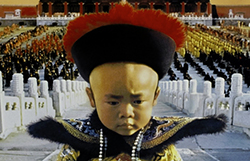 The Last Emperor wins Academy Award for best picture. The Bernardo Bertolucci-directed biopic scored a clean sweep: Nine wins out of nine nominations, the first time that happened since Gigi. The winners included Vittorio Storaro for his beautiful cinematography.
The Last Emperor wins Academy Award for best picture. The Bernardo Bertolucci-directed biopic scored a clean sweep: Nine wins out of nine nominations, the first time that happened since Gigi. The winners included Vittorio Storaro for his beautiful cinematography.
1987
(no entry for this year)
IBM announces 3 millionth PS/2 personal computer
RISC OS is released
The first worm experience appears
The NeXT (68030 CPU) computer is introduced after two years of research
Unisys takes over Convergent Technologies
Molecular biologist John Cairns describes experiments suggesting that bacteria facing environmental stress can "direct" their mutations to produce favorable adaptations. Directed mutation will remain a controversial idea, but the possibility that organisms mutate at a greater rate (hypermutation) under environmental stress will gain more acceptance.
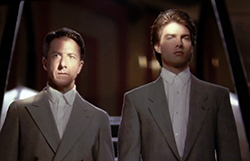 Rain Man wins Academy Award for best picture. The film, produced by Mark Johnson and directed by Barry Levinson, was basically a two-character study, with Dustin Hoffman winning as best actor; while Tom Cruise's performance was widely admired, he was surprisingly not nominated.
Rain Man wins Academy Award for best picture. The film, produced by Mark Johnson and directed by Barry Levinson, was basically a two-character study, with Dustin Hoffman winning as best actor; while Tom Cruise's performance was widely admired, he was surprisingly not nominated.
1988
(no entry for this year)
 Douglas Wilder wins the governorship of Virginia, make him the first African-American to be popularly elected to that office.
Douglas Wilder wins the governorship of Virginia, make him the first African-American to be popularly elected to that office.
 Gen. Colin L. Powell is named chief of the United States Joint Chiefs of Staff, the first African-American in the youngest person (52) to hold the post.
Gen. Colin L. Powell is named chief of the United States Joint Chiefs of Staff, the first African-American in the youngest person (52) to hold the post.
 In March, Frederick Andrew Gregory becomes the first African-American to command a space shuttle when he leads the crew of the Discovery.
In March, Frederick Andrew Gregory becomes the first African-American to command a space shuttle when he leads the crew of the Discovery.
Apple introduces the Macintosh SE/30
Apple Macintosh Portable Released
ICL introduces DRS model 40 and 45
Tim Berners-Lee toyed with the idea of web pages and hyperlinks
George Bush becomes forty-first president of the United States.
Ned Colbert finally completes his definitive species description of the Coelophysis dinosaurs he found in 1947.
Philip Gingerich finds a fossil whale, Basilosaurus in Egypt. It has tiny legs, just inches long, retaining all five toes. Five years later, he will discover an even more primitive whale ancestor, Rodhocetus, with even bigger hind legs, in Pakistan. Eighteen years later, Hans Thewissen will announce the discovery of another missing link in cetacean evolution: fox- like Indohyus found in Kashmir.
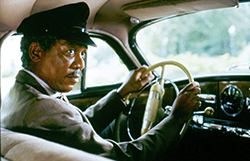 Driving Miss Daisy wins Academy Award for best picture. The film was a rarity, winning the top prize though its director (Bruce Beresford) wasn t even nominated. Among the wins were actress Jessica Tandy and scripter Alfred Uhry, adapting his own play.
Driving Miss Daisy wins Academy Award for best picture. The film was a rarity, winning the top prize though its director (Bruce Beresford) wasn t even nominated. Among the wins were actress Jessica Tandy and scripter Alfred Uhry, adapting his own play.
1989
(no entry for this year)
ESP Quick Facts
ESP Origins
In the early 1990's, Robert Robbins was a faculty member at Johns Hopkins, where he directed the informatics core of GDB — the human gene-mapping database of the international human genome project. To share papers with colleagues around the world, he set up a small paper-sharing section on his personal web page. This small project evolved into The Electronic Scholarly Publishing Project.
ESP Support
In 1995, Robbins became the VP/IT of the Fred Hutchinson Cancer Research Center in Seattle, WA. Soon after arriving in Seattle, Robbins secured funding, through the ELSI component of the US Human Genome Project, to create the original ESP.ORG web site, with the formal goal of providing free, world-wide access to the literature of classical genetics.
ESP Rationale
Although the methods of molecular biology can seem almost magical to the uninitiated, the original techniques of classical genetics are readily appreciated by one and all: cross individuals that differ in some inherited trait, collect all of the progeny, score their attributes, and propose mechanisms to explain the patterns of inheritance observed.
ESP Goal
In reading the early works of classical genetics, one is drawn, almost inexorably, into ever more complex models, until molecular explanations begin to seem both necessary and natural. At that point, the tools for understanding genome research are at hand. Assisting readers reach this point was the original goal of The Electronic Scholarly Publishing Project.
ESP Usage
Usage of the site grew rapidly and has remained high. Faculty began to use the site for their assigned readings. Other on-line publishers, ranging from The New York Times to Nature referenced ESP materials in their own publications. Nobel laureates (e.g., Joshua Lederberg) regularly used the site and even wrote to suggest changes and improvements.
ESP Content
When the site began, no journals were making their early content available in digital format. As a result, ESP was obliged to digitize classic literature before it could be made available. For many important papers — such as Mendel's original paper or the first genetic map — ESP had to produce entirely new typeset versions of the works, if they were to be available in a high-quality format.
ESP Help
Early support from the DOE component of the Human Genome Project was critically important for getting the ESP project on a firm foundation. Since that funding ended (nearly 20 years ago), the project has been operated as a purely volunteer effort. Anyone wishing to assist in these efforts should send an email to Robbins.
ESP Plans
With the development of methods for adding typeset side notes to PDF files, the ESP project now plans to add annotated versions of some classical papers to its holdings. We also plan to add new reference and pedagogical material. We have already started providing regularly updated, comprehensive bibliographies to the ESP.ORG site.
ESP Picks from Around the Web (updated 06 MAR 2017 )
Old Science

Weird Science

Treating Disease with Fecal Transplantation
Fossils of miniature humans (hobbits) discovered in Indonesia

Dinosaur tail, complete with feathers, found preserved in amber.
Astronomy

Mysterious fast radio burst (FRB) detected in the distant universe.